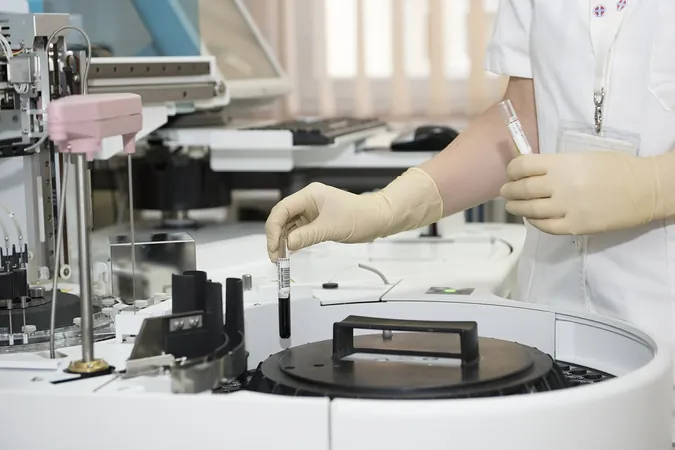
From Social Media to Sewage: How Public Health Surveillance Detects Disease Outbreaks Fast!
2024-11-21
Author: Ming
Introduction
In recent years, public health officials have been increasingly utilizing modern technology and innovative methods to catch potential disease outbreaks early. Imagine a surge of social media posts discussing mysterious rashes in a community, a sudden die-off of birds at a local preserve, or an alarming spike in emergency room visits—these are critical signs that health officials must monitor to mitigate emerging health threats.
Why Is This Important?
Health emergencies can range from contagious diseases to environmental disasters. With the potential to overwhelm healthcare systems, the importance of timely detection and response cannot be overstated. Through comprehensive disease surveillance, public health experts strive to identify threats before they escalate into larger crises.
How Surveillance Works
Public health surveillance involves systematic data collection and analysis. The cornerstone of this approach is indicator-based surveillance, which tracks specific health metrics over time to identify anomalies. Hospitals are legally required to report data on certain diseases, such as measles or polio, which is then compiled by local health departments and sent to national organizations like the CDC.
In addition to traditional methods, new technologies have expanded the scope of surveillance drastically. For example, the National Wastewater Surveillance System allows officials to analyze sewage for pathogens, including the COVID-19 virus and influenza. This method is particularly useful as it can detect outbreaks within communities, even among individuals who do not exhibit symptoms.
Detecting Unusual Patterns in Real-Time
In tandem with indicator-based surveillance, event-based surveillance actively monitors real-time data for signals of unusual health events. This includes tracking social media for mentions of unexplained illnesses, scrutinizing hospital records for sudden spikes in symptom reporting, and encouraging public participation through hotlines and online reporting tools.
Once potential outbreaks are detected, teams move quickly to gather samples from various sources—be they human, animal, or environmental—to identify specific pathogens. By analyzing samples, health technicians can establish how a disease spreads and assess its risks to public health.
The Vital Role of Contact Tracing
When an outbreak is confirmed, contact tracing becomes crucial. Health officials work meticulously to identify anyone who has come into contact with an infected person. This process involves interviewing patients about their recent activities and interactions, thereby enabling health workers to provide important guidelines for testing and symptom management.
Contact tracing was a game-changer during the early COVID-19 pandemic. Health departments used this strategy extensively to pinpoint potentially infected individuals and interrupt the virus's propagation, showcasing its effectiveness in controlling outbreaks.
Proactive Measures to Prevent Pandemics
Ultimately, the goal of public health officials is to minimize illness and keep communities safe. Strategies to contain outbreaks include isolating infected individuals, quarantining exposed persons, and, in certain cases, enforcing travel restrictions. For zoonotic diseases like bird flu, specific agricultural protocols may be implemented to prevent transmission to humans.
Predictive modeling and data analysis play a critical role in anticipating potential spread patterns and ensuring that healthcare systems are prepared. Resource allocation and timely updates for health workers are essential for maintaining a high level of vigilance and responsiveness.
The Future of Public Health Surveillance
While the next emerging health threat remains unknown, public health professionals are continuously on the lookout, ensuring they’re equipped with advanced tools and strategies to respond swiftly and effectively. By leveraging innovative methods from social media monitoring to sewer analysis, they are front-line defenders against the next disease outbreak.
Stay informed and engaged—our health may depend on it!




 Brasil (PT)
Brasil (PT)
 Canada (EN)
Canada (EN)
 Chile (ES)
Chile (ES)
 España (ES)
España (ES)
 France (FR)
France (FR)
 Hong Kong (EN)
Hong Kong (EN)
 Italia (IT)
Italia (IT)
 日本 (JA)
日本 (JA)
 Magyarország (HU)
Magyarország (HU)
 Norge (NO)
Norge (NO)
 Polska (PL)
Polska (PL)
 Schweiz (DE)
Schweiz (DE)
 Singapore (EN)
Singapore (EN)
 Sverige (SV)
Sverige (SV)
 Suomi (FI)
Suomi (FI)
 Türkiye (TR)
Türkiye (TR)